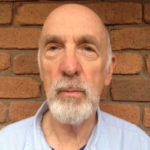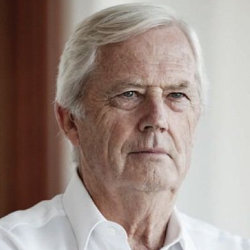
Small but significant metaphorical explosions have reverberated recently around the building that some Australians know as our most sacred site.
Years ago, the late Professor Colin Hughes began an article about the politics of 1975 with a metaphor about the tawny hills around Canberra blowing their tops one by one as momentous events occurred. A similar metaphor applies to recent happenings in and around the Australian War Memorial, though the hills are lower in the Memorial’s suburb of Campbell and the ramifications not as far-reaching.
First, there was the $50m blowout in the cost of the War Memorial development. The Memorial got the extra money in the dying days of the Morrison government and the final stages of the March Budget process – on the grounds that the cost of materials and labour had increased – but managed to keep the payment secret till 1 July. It also seems to have used the normal process of equity injections for capital works to try to disguise the additional $50m.
Secondly, there was musical chairs and pass-the-parcel on the Memorial’s governing Council. Council Chair, Kerry Stokes, resigned from the position two days after the Budget which (secretly, at that point) blew the cost of the expansion program to just on $550m, $50m beyond the amount that Stokes had personally guaranteed the then government it would not go. Then, former Memorial Director, Brendan Nelson, was appointed to the Council as a member from 31 March (possibly by direction of the then Prime Minister’s Office) and three weeks later (22 April) was elected by his fellow Council members as Chair.
If (as seems likely) Kerry Stokes had seen the blowout coming, he had passed the parcel (or poison chalice) to Nelson, his partner in lobbying the Morrison government in 2018 to allocate the original $500m. Yet Nelson apparently looked forward to returning to the Memorial, “one of the true loves of his life”, now being run by Director Matt Anderson, whom Nelson had encouraged to apply for the Director’s job in 2019.
Five months passed, enlivened on 1 July by breaking story about the extra $50m (see above), and on 16 September the news that former Prime Minister and scourge of Labor, Tony Abbott, had been given another three years on the Memorial Council. A further small explosion, though Minister Matt Keogh in his media release spoke glowingly of Abbott’s qualities.
Then, on 27 September, we had the news that Nelson was in January moving his day job from Boeing Australia-New Zealand-Pacific in Sydney to a bigger job at Boeing International in London. He was resigning from the Memorial Council, to the relief of some observers, who had seen as totally inappropriate his simultaneously chairing the Council and being a senior executive of Boeing, the world’s third biggest manufacturer of military equipment. That was an explosion indeed.
The next event at least involved heat, when Minister Keogh summoned journalists to Campbell for a media conference on 29 September (hard hats and hi-vis vests supplied) at which an announcement was promised. The announcement was not about the Memorial project in the broad – though questions were asked about the cost blowout and the possibility of future hikes – but to spruik an innovative $10m project to heat the Memorial, new parts and old, geothermally.
Right at the end of the press conference, however, Chair Nelson surprised with this statement:
“The council has made the decision that we will have a much broader, much deeper depiction and presentation of the violence committed against Aboriginal people, initially by British, then by pastoralists, then by police and by Aboriginal militia. That will be part of the new galleries. And so we will have more to say about that in due course when the gallery development is more advanced.”
That was the biggest of our series of explosions. What happens now is a matter of conjecture. Some observers have seen Nelson’s remark as indicating a step change in the way the Memorial, and the rest of us, treat our history. Others warn that if “depiction and presentation” just means the Memorial’s curators gathering into one space the Memorial’s 63 artworks depicting frontier violence (Nelson’s figure) along with assorted spears and shields and calling the space “the Frontier Wars Gallery” that will not meet the case.
There needs to be commemoration as well. As historian Henry Reynolds wrote, “We will certainly know that we are entering a new era when a tomb of an unknown warrior is placed next to the grave of the unknown soldier in the Memorial’s inner sanctum”. That’s more like it.
Why the change of heart from the Memorial? Perhaps Nelson did not look forward to working with Abbott on the Council, decided to move on to greener pastures in London, and wanted to leave another legacy besides the massive building program. Perhaps the Council decision, probably in July or August, was influenced by their viewing Rachel Perkins’ documentary, The Australian Wars. We know that a near final cut of the crucial third episode of the show – including an awkward 2020 interview (with brutal close-ups) of Director Anderson in which he stuck to the Memorial’s then position about avoiding the Frontier Wars – had gone to the Memorial around 18 July.
Honest History has made a Freedom of Information request for the Council debate and decision; perhaps that will throw some light. Meanwhile, no-one should underestimate the capacity of the venerable War Memorial to create explosions and eruptions in Campbell.




